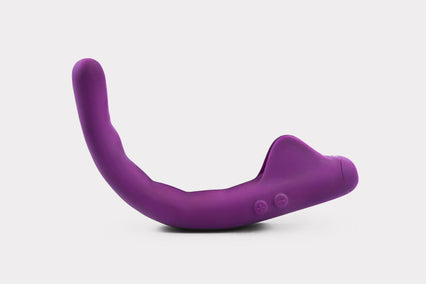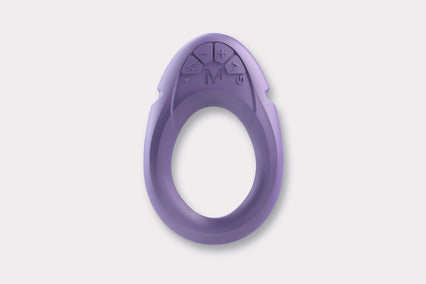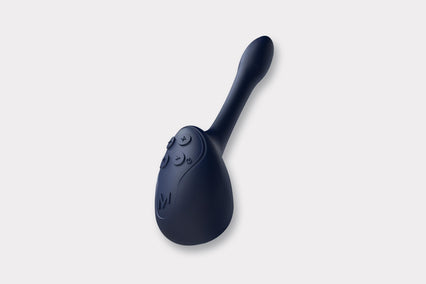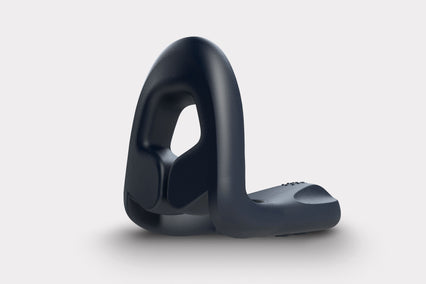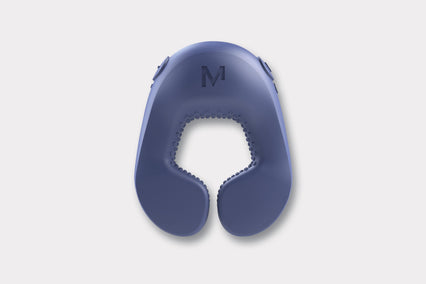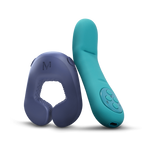When facing a prostate cancer diagnosis, the overwhelming focus for most people is on eradicating the disease. In many cases, this will involve a prostatectomy: surgery on or around the prostate to remove a malignant tumor. Once the cancer has been successfully treated, you may encounter erectile dysfunction as a result.
Experiencing ED post-surgery is normal, but in the majority of cases, your sexual function will bounce back to health with the help of modern medicine. Keep in mind that the prostate is not necessary to get and maintain an erection, so it’s still possible to have a healthy sex life once your prostate is removed. Here’s what to expect whether you’ve recently undergone prostate surgery or have a surgery coming up.
Does prostate cancer cause erectile dysfunction?
The short answer: No. Prostate cancer does not cause erectile dysfunction. However, the two are closely linked as prostate cancer can reduce sexual desire and lead to extreme fatigue, and this combination might make getting an erection more difficult.
Some men with prostate cancer struggle with self-confidence or their sense of masculinity. Some experience changes in the way they respond to pleasure, and may reach orgasm sooner than they want. Feeling down on yourself, anxious, or stressed can impact your attitude towards sex, and make firm erections seem unachievable.
Fortunately, medical advancements have made surgeries for prostate cancer less invasive than ever, so that after your procedure, you can regain control of the elements of your life that prostate cancer may have dampened.
Types of prostatectomy and how they impact erectile function
Prostate surgery (or prostatectomy) is a part of your recovery journey, and your ability to get and maintain an erection may depend on the kind of surgery you have. There are three different types of surgery to consider: open RP, laparoscopic RP, or robot-assisted RP. Your doctor might recommend one or the other based on the status of your cancer.
Dr. Dan Sperling, the Medical Director of the Sperling Prostate Center explains the types of radical prostatectomy (RP) as the following:
- Open RP. “Open radical RP is a long surgery that removes the entire gland,” Dr. Sperling says. Here, the surgeon makes a short incision that allows them to insert surgical tools and see your tumor clearly. The surgical team may also remove surrounding tissue like lymph nodes and fat near the prostate gland. The vas deferens, or the tubes that transport semen, will be cut.
- Laparoscopic or robot-assisted RP. Laparoscopic RP involves a surgeon operating through small incisions using video-equipped tools that allow them to see inside the body. The process is the same when robot-assisted, although the actual procedure is performed by an incredibly innovative robotic mechanism. “These methods are less invasive than open RP so recovery is shorter,” Dr. Sperling explains. “Again, the whole gland is removed.” Research actually shows that robot-assisted RP is associated with earlier and increased rate of recovery for erectile function.
Of the estimated 90,000 prostatectomies performed annually, Dr. Sperling says that 85% are performed laparoscopically.
“Part of the increase has to do with treating patients 70+ years old,” he explains to MysteryVibe. “Historically, open RP is a long and bloody surgery with longer recovery time, so older patients with localized prostate cancer were not considered good surgical candidates but were often referred for radiation or watchful waiting.”
No matter what kind of surgery you have, the neurovascular bundles that control erections are bound to be affected.
“Nerves do not like to be disturbed, and tugging during surgery, however gentle, can traumatize them,” Dr. Sperling says. “In many cases, they soon ‘wake up’ and resume natural function.”
As a general rule of thumb, Dr. Sperling says that open RP has higher rates of postoperative erectile dysfunction. With laparoscopic or robotic surgery done at the hands of an experienced surgeon, rates of ED can range drastically from about 10 – 80%.
“Much depends on the patient and the surgeon, since anatomy and skill vary,” Dr. Sperling says.
Keep in mind that if your cancer has not spread outside of the prostate gland, you might qualify for nerve-sparing prostatectomy, where your surgeon aims to avoid nerves that control erections. This is not always an option depending on how aggressively your tumor is growing. As your cancer won’t be cured if your surgeon leaves impacted cells behind, he or she will have to remove nerves if your cancer is too close to them.
According to Dr. Sperling, if your surgeon is able to spare nerves during the RP procedure, you may be able to return to baseline function quicker than patients who do not have their nerves spared. It’s important to align with your surgeon on whether a nerve-sparing procedure might be possible for you, and what you can expect afterwards.
How long does ED last after prostate surgery?
There are a number of factors that go into whether you will regain full erectile function after surgery, as well as how long you may experience ED such as baseline erectile function pre-surgery, patient age, surgeon skill, individual anatomy, psychology, and whether the surgeon finds more extensive cancer than previously thought. Each of these things affects the outcome of your treatment and the degree at which you experience ED.
According to Johns Hopkins Medicine, nearly all men will experience some erectile dysfunction in the first few months after prostate surgery. About 40-50% of men return to baseline after one year. An additional 30-60% will return to baseline after two years.
Beyond the quantity and quality of your erections, you may experience other changes that can impact your sexual behavior. Your penis may become shorter and change shape slightly. You will no longer ejaculate semen as the vas deferens is severed during surgery, but you can still have fulfilling orgasms. Some men report their orgasms feel a little different, but this will vary person to person.
These changes in your anatomy can be jarring. You may feel disconnected from yourself or your sexuality after surgery, and these mental factors might make it difficult to feel aroused or get an erection. Remember: Everything you previously knew and loved about your body is still intact, even if you don’t feel that way immediately following surgery. There are ways to tackle post-operative ED, and it’s possible to find solutions that work for you.
How to manage ED after prostate surgery
As you’re seeking effective solutions for post-op ED, make sure to get on the same page as your healthcare provider. They can recommend treatments specific to your needs throughout recovery. Here are a few of the most popular, beneficial methods in managing erectile dysfunction after prostate cancer treatment.
Take oral medications
Prescription medication (like Viagra, Cialis, Stendra, or Levitra) is considered the first-line of penile rehabilitation for most men who experience ED. With the help of these medications, about 75% of men who were able to undergo a nerve-sparing prostatectomy reported successfully achieving erections. Viagra has been known to improve the ability to have an erection by 60% when the nerves have been spared, but this does decrease in those with no spared nerves.
“Some surgeons have patients start taking such medication before surgery, but certainly soon after,” Dr. Sperling attests. Speak to your doctor about what they recommend.
Use injections
Penile injections have been shown to be an effective treatment for erectile dysfunction following a prostatectomy. It’s not as commonly used as oral medication, however, studies show that injections can result in not only improved erectile function, but also improved self esteem and satisfaction in sexual relationships post-op.
Try mechanical devices
VEDs, or vacuum erection devices, are a common way to manage ED. They help keep blood engorgement in the penis, so tissue doesn’t atrophy from lack of use.
Using a device like a VED can take some of the spontaneity out of intimacy. However, that doesn’t mean they can’t play a role in an exciting and fulfilling sex life. Research shows that VEDs improve erectile function and preserve penile size after RP. And in one study out of Ireland, all of the participants actually reported that they’d recommend the VED to other patients.
Try natural treatments
A quick web search of “natural remedies for ED” will populate a thousand theories. But what actually works? According to Harvard Health, taking regular walks, paying close attention to your vascular health, and maintaining a healthy weight and diet can go a long way in improving your sexual function. Plus, these simple life adjustments will be beneficial in helping your body bounce back from cancer treatments as well.
Try sex toys and aids for ED
Pleasure products can act as a friend, partner, and aid in gaining erections when it’s hard to get hard post-treatment. When combined with oral medication or another form of penile rehab, sex toys can be an effective in-the-moment solution for ED. Plus, they’re fun to use by yourself or with a partner, and can bring some of the zest and spontaneity back to sex if cancer treatment has made things feel a little stagnant.
Take Tenuto 2, for example. With powerful vibrations that stimulate the penis and the perineum, it’s ideal to help you get and maintain an erection, even after surgery. In a 2022 case study, Tenuto 2 was shown to improve erectile dysfunction by two times in a post-op colorectal cancer patient. Plus, with its flexible design and comfortable fit Tenuto 2 will still be able to enhance your erections even if you experience changes in your anatomy after a prostatectomy.
Consider surgical options
When other treatments for ED fail, doctors may recommend a penile implant. These devices are surgically placed inside the penis and help facilitate erections if you’ve been struggling with impotence.
“I would invite men who haven’t regained function to their satisfaction after, say, two years, to consider penile implant surgery,” Dr. Sperling says.
There are two main types of implant - semi-rigid and inflatable. They work differently and have respective pros and cons, so consult a doctor about your unique needs.
Take care of your mental health
Erectile dysfunction can be brought on just as easily by mental barriers as it can be by physical conditions. Undergoing cancer treatments is a lot on your body and on your brain, and if you find your body changing due to symptoms or throughout treatment, it can be easy to feel down or wonder if you’ll ever feel like yourself again. You might benefit from seeking counseling after your prostatectomy. Not only will this create a space to reflect on and appreciate what you’ve been through, but it can help manage any anxiety or depression that may be contributing to impotence.
Takeaway
It can take time for men to recover after a prostatectomy, and some men may find they never regain full penile function. You can feel reassured that Dr. Sperling finds, “Mother Nature often wakes up during penile rehab.” This means that even if you aren’t achieving erections at the same frequency as you did pre-op, once you take steps to tackle this issue, your body might meet you halfway. With the help of oral medications, implants, natural approaches, or a combination of treatments, most men will go on to lead fulfilling sex lives after a prostatectomy.
“What most men don’t realize is that a man who can’t get it up can still have orgasms,” he adds. “Prostate surgery does not impact the spinal nerves that control orgasm.”
So you can still go on to have great sex, whether you have a prostate or not.

